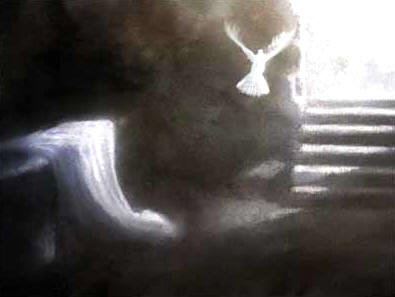Living the Resurrection
Rowan Williams’ Easter sermon reminds us that we (i.e. our lives) are the living proof of the reality of resurrection:
…And the only way of saying that, of course is for it to be lived out. It’s no use talking endlessly – preaching endlessly – about reconciliation and forgiveness and liberation. No argument can persuade anyone about this, only the lived reality. It’s worth remembering that Paul of Tarsus joined the Christian community not as a well-meaning religious enquirer but as someone who had been the equivalent of a terrorist gunman, someone who had supervised the activities of a private militia devoted to abducting and imprisoning members of the Christian sect.
On the other hand, Larry Hurtado’s Why Was Jesus Crucified? A historical perspective is a flip-side warning to the Church when she forgets her subversive nature and mission:
In fact, Jesus’ crucifixion posed a whole clutch of potential problems for early Christians. It meant that at the origin and heart of their faith was a state execution and that their revered savior had been tried and found guilty by the representative of Roman imperial authority. This likely made a good many people wonder if the Christians weren’t some seriously subversive movement. It was, at least, not the sort of group that readily appealed to those who cared about their social standing.
Jesus’ crucifixion represented a collision between Jesus and Roman governmental authority, an obvious liability to early Christian efforts to promote their faith. Yet, remarkably, they somehow succeeded. Centuries of subsequent Christian tradition have made the image of the crucified Jesus so familiar that the offensiveness of the event that it portrays has been almost completely lost.
And Mark Roberts encourages us to celebrate the Resurrection with his Easter Postscript:
…Because of the resurrection, we reverence the cross.
Because of the resurrection, the symbol of the cross is one of the best known in the world.
Because of the resurrection, what was once the sign of horrific death is now a sign of life and hope.
Because of the resurrection, the death of Jesus is remembered, cherished, even celebrated.
Because of the resurrection, the Stations of the Cross lead, not to death, but to live.
Because of the resurrection, we are reborn into a living hope.
Because of the resurrection, we know that we too will live anew.
Because of the resurrection, everything is different.
Because of the resurrection, new life has begun.
Christ is risen!
He is risen, indeed!
While our good bishop at Durham commissioned us:
…to be agents of new creation we must ourselves become, and live as, people of new creation. And that means holiness, which means rediscovering what a full and genuine human life was always meant to be like. Our world has lived on so many lies and half-truths about what it means to be human, whether it’s the celeb culture, the drug culture, the idolisation of sport, the obsession with sex, or just the slow deterioration of human relationships and community. The challenge to personal holiness always comes as a shock, like someone waking you up at midnight and insisting that you’ve got to come running to see the new dawn. We are called to be Easter people, resurrection people, leaving behind in the grave all that spoils and downgrades our human calling.

